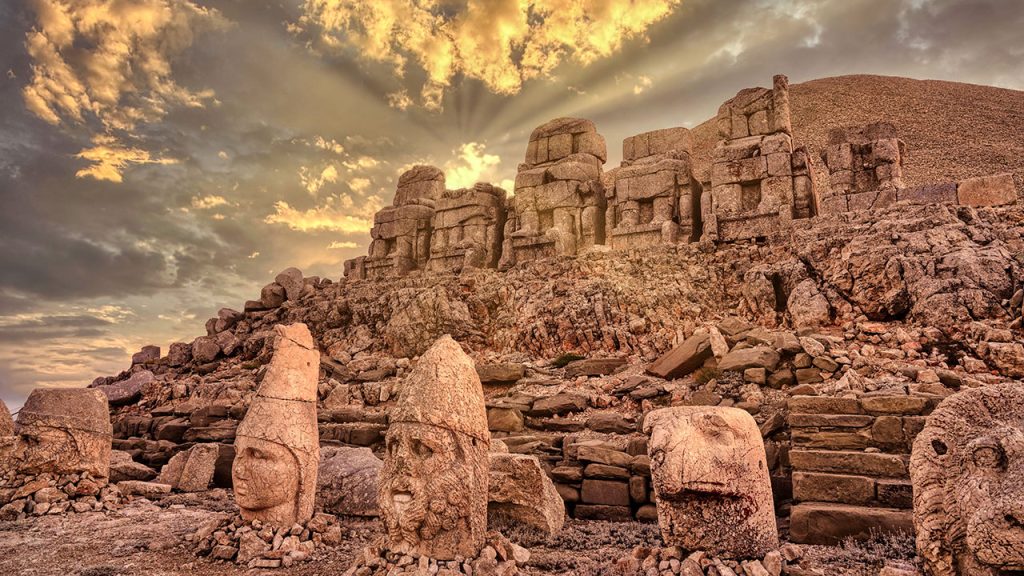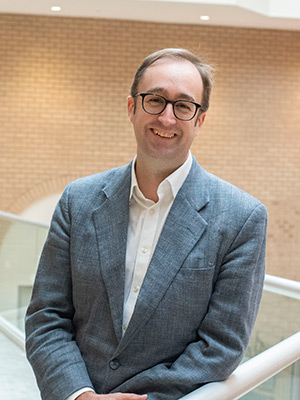In the ancient world, when people knew their kingdoms would soon be absorbed into the Roman Empire, how did they envision their future? What did they do to secure it?
That’s the topic of a recent book by Richard Teverson, Ph.D., assistant professor of art history, who puts a spotlight on something that tends to be overlooked in histories of conquering powers: the hopes and dreams of the conquered.
Studying such “past futures” is growing more popular in the humanities and social sciences, said Teverson, author of Visions of the Future in Roman Frontier Kingdoms 100 BCE–100 CE, published in September by Routledge. “You can’t get a full picture of a decision that someone makes in the past,” he said, “unless you have a sense of what they thought could happen.”
Teverson gained this sense by examining public art created during the empire’s expansion. He got the idea for the book from his students—when they wrote in a midterm exam about the imagined futures reflected in the Arch of Constantine in Rome, he decided to apply this idea at the former empire’s edge and beyond it, to structures created by people who later came under Roman rule.
Nations or groups being taken over deserve to have their aspirations understood rather than being told to simply “get on board” with their new ruler’s vision, he said.
“Even people who you might think are on the losing side of history have a future that they’re envisaging and, especially if it’s no longer feasible in some way, are engaged in a really complicated idea about how to fit their aspirations to reality,” he said.
Protecting Rights Through Art
In 14 BCE, as Alpine tribes were falling to Roman conquest, the local ruler Cottius made a deal with the Romans to absorb his kingdom into the empire and remain as magistrate.
To proclaim the new order, he commissioned an archway that, Teverson argues, was designed with the future in mind: As opposed to the Romans’ usual depictions of peacemaking, which might show a vanquished barbarian kissing the hand of a Roman general, the arch contains a relief of Cottius shaking hands with the Roman emperor Augustus.
It also shows tribes receiving citizenship tablets—a way of codifying certain rights and privileges in case they were later challenged, Teverson argues. “This seems, to me, pretty direct in its aspirations and its concern for documenting a ritual of political transfer,” he said.
‘A Divinely Ordained Future’
Another example comes from Kommagene, in modern-day Turkey, a kingdom conquered by Rome in 17 CE. Before that, as wars involving Rome and other powers clouded the kingdom’s future, its ruler, Antiochos I, built a hilltop complex containing icons and images meant to convey a glorious destiny for the kingdom.
That was also his goal, Teverson argues, when the king took the unusual step of including an engraving of his own horoscope so that worshippers would compare it with the night sky and be reminded, “‘Oh, we are working in a kingdom that has a divinely ordained future,’” he said.
Crafting ‘the Futures They Need to Survive’
Through this and other stories of artistic expression, Teverson illustrates how people “craft the futures they need to survive” in the face of uncertainty about what’s coming. It’s an idea that resonates from ancient Rome to today’s marginalized communities who may have a picture of their own future in mind—but face strong headwinds in making it a reality, he said.
An example might be city planners envisioning a future for a neighborhood—like Harlem, where Teverson lives—without consulting with the residents, he said. “If you want to understand the problems of Harlem, you need to, in some ways, ask yourself, well, what does Harlem think its future is going to be?”
While writing the book, he was thinking of the looming problem of climate change and the questions that future generations might ask about the future we’re trying to shape today.
“Maybe even in my daughter’s lifetime,” he said, “they’re going to look back and [say], what were you planning in 2024?”



